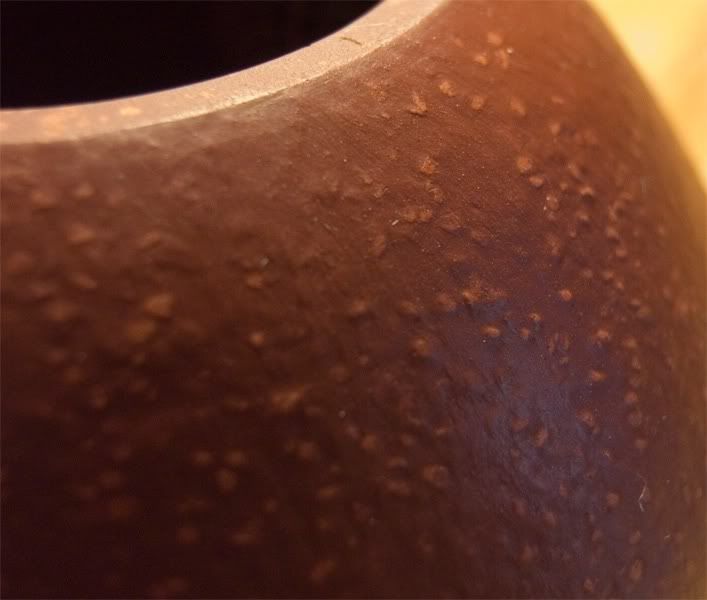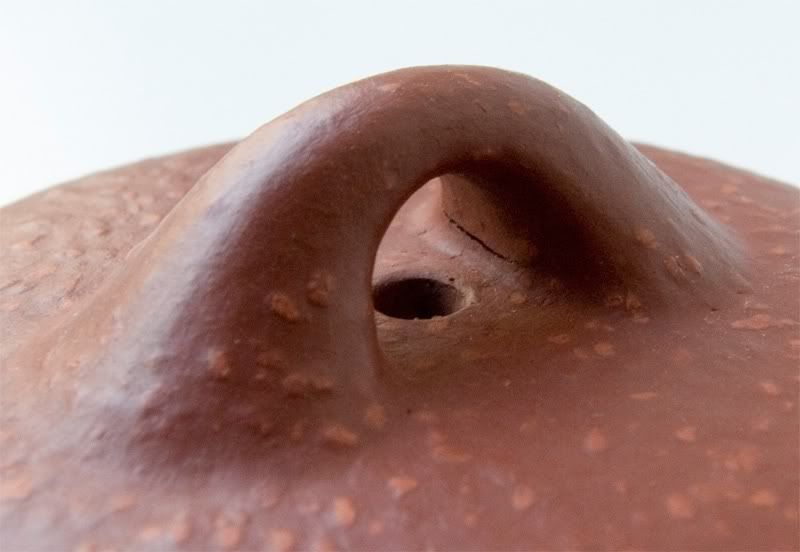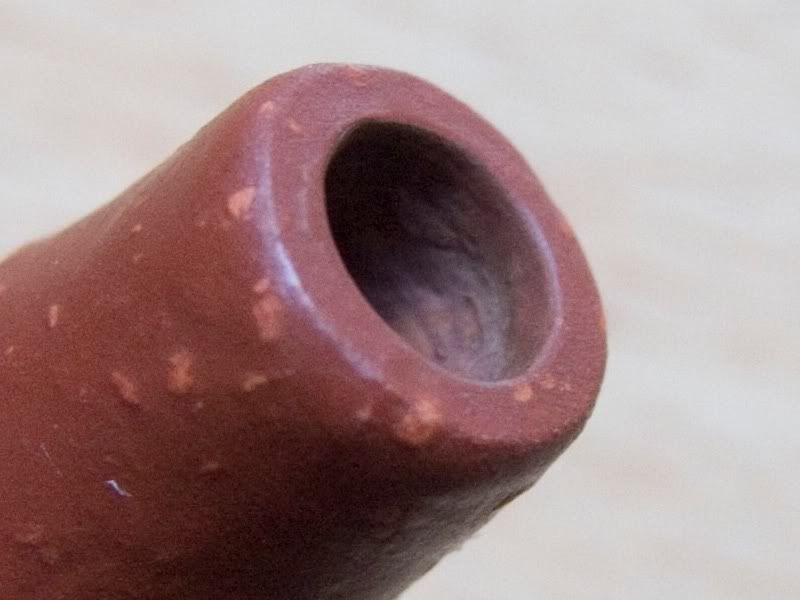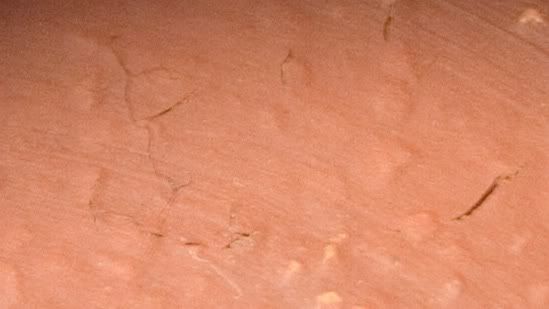Bert wrote:What caused my attention was the underside of the handle. Is this a crack?
Yes. In a previous post on here I explained why cracks occur around handles, knobs, and lugs. Because they're thicker, they dry slower, and thinner parts that dry faster tend to pull away from them, causing cracks.
Bert wrote:This looks suspicious...A look at the spout confirmed my hypothesis:
Here you can see a border in the spout where the red surface changes to paler clay.
I think the pot was covered with a layer of more liquid clay and got brushed in order to make an appearance similar to shrinkage lines. This crack-like lines are the layer peeling off.
I don't think that this pot was brushed in slip or had another application of clay, for a couple of reasons. Firstly, yixing is heavily burnished, as is evidenced by its shine and the relative smoothness in spite of its larger duan ni particles. Burnishing is usually done for hours: any second application of clay or slip would be rubbed off in the burnishing, but the LZN pots are the same clay appearance outside as in.
Secondly, I've chipped the lid on one of my pots, and the interior clay appears the same as the exterior clay. However, it's not a deep chip, so it's hard to say for certain.
Bert wrote:I am a bit disappointed. I mean come on - everybody knows this is not real zhuni!
Do we? How much do we really know about "real" zhuni and who has taught it to us? I bring this up often on discussion of antique/zhuni pots, but Sothebys refuses to auction yixing pots because there is no expert who can identify antique yixing or "real" zhuni clay to any acceptible level.
There's no book on yixing clays that indicates how to identify it, and even if there were, what if two books said different things?
Most of the information on this comes from vendors. Accept their words with a grain of salt. Even truisms held online about zhuni and shrinkage lines aren't always true. Many things can be done to clay body or during firing to induce or prevent heavy shrinkage.
Bert wrote:The pot could be more beautiful if the clay were not layered because the craftmanship is not that bad. Instead we got pots where the layer will flake off in time.. Poor pot

Layering the clay on yixing pots isn't an odd occurrence. Many yixing factory #1 pots were layered hong ni on top of zi ni, and vice versa. See this set of 1970s pots, for example:
http://www.jingteashop.com/pd_yixing_dragon.cfm.
Furthermore, the nature of clay firing prevents layered clays from flaking off. When a clay is fired, it vitrifies. There's no reason why silicates in one clay wouldn't fuse with the silicates of another. Also, expert knowledge of two clays' shrinkage behaviors would be needed to layer any two clays successfully without it distorting the pots shape in the firing. Two clays with roughly equal shrinkage rates will fuse relatively easily. Korean slip inlay pots from the 11th century and after exist today with none of the slip falling out. In the case that this pot is layered, I wouldn't worry too much about damage.
As far as the damage you already see, I think that's evidence of drying errors caused by uneven wetness, and consistent with what I've seen on other yixing pots and stoneware pots I've seen dry unevenly since taking ceramics courses here in LA.
Last note: nothing in here should imply that I'm at all sure of the zhuni nature of the clay. I just want to point out that a lot of your reasoning is flawed, and you have less reason to despair.





